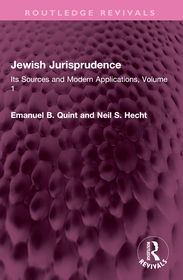
The Swedish Missionary Society and Sámi Schooling, c. 1835–1920
Series: Cambridge Imperial and Post-Colonial Studies;
- Publisher's listprice EUR 53.49
-
22 184 Ft (21 128 Ft + 5% VAT)
The price is estimated because at the time of ordering we do not know what conversion rates will apply to HUF / product currency when the book arrives. In case HUF is weaker, the price increases slightly, in case HUF is stronger, the price goes lower slightly.
- Discount 12% (cc. 2 662 Ft off)
- Discounted price 19 522 Ft (18 593 Ft + 5% VAT)
Subcribe now and take benefit of a favourable price.
Subscribe
22 184 Ft

Availability
Not yet published.
Why don't you give exact delivery time?
Delivery time is estimated on our previous experiences. We give estimations only, because we order from outside Hungary, and the delivery time mainly depends on how quickly the publisher supplies the book. Faster or slower deliveries both happen, but we do our best to supply as quickly as possible.
Product details:
- Publisher Springer Nature Switzerland
- Date of Publication 4 October 2025
- Number of Volumes 1 pieces, Book
- ISBN 9783031963063
- Binding Hardback
- No. of pages279 pages
- Size 210x148 mm
- Language English
- Illustrations XXIV, 279 p. 18 illus., 7 illus. in color. Illustrations, black & white 700
Categories
Long description:
"
This open access book offers a thorough examination of the most important actor in schooling children from the Indigenous Sámi during the nineteenth century, namely the Swedish Missionary Society (SMS). In the late 1830s, the SMS created its first schools for Sámi children and youth in small rural villages in the northern inlands of Sweden. The missionary schools enrolled several thousand children in the approximately eighty-year-period they operated, for many decades being the predominant school for the Sámi. The impulse behind the creation of the SMS came from evangelical movements such as British Methodism, which helped to initiate the Stockholm-based society in 1835, and aided the startup of a school in the Swedish colony of Saint-Barthélemy in the West Indies. The society was supported by private donations, as well as financial aid and supervision from the Swedish Evangelical-Lutheran state church. It kept in operation between five to ten schools and orphanages until the so-called ‘nomadic school’ reform in 1913, when the missionary schools were either shut down, modified to become Swedish primary schools, or subsumed under the new and expanding state-governed nomadic school system.
By examining school practice aimed at Sámi pupils in Sweden, this book provides valuable insights into the overall organisation and curriculum of the missionary schools, their ideological driving forces, and their relation to global developments and the ongoing formation of the Swedish primary school system. Such knowledge helps deepen our understanding of the long-term organisation of Sámi education in Sweden, and more broadly within the Nordic countries. Through its analysis, this book seeks to develop the history of missionary education, as well as research into settler colonial and Indigenous schooling.
Table of Contents:
"
.- 1. Introduction.- 2. Education and Conversion.- 3. Timing Society and the Missionary Schools.- 4. The Missionary Society and the Sámi.- 5. Establishing Schools and Additional Educational Infrastructure.- 6. School Organisation, Teaching, and Knowledge Content.- 7. The Pedagogy of Conversion: Pietism in Action.- 8. Beacons of Christ: Schooling and Acculturation.- 9. The Art of Cultural Differentiation.- 10. The 'Quiet Victories' of Elementary Schooling.- 11. Schooling Sámi Swedes: From Pietism to Nationalism.- 12. The Economic Transition and Missionary Schooling.- 13. The Shutdowns: The End of an Era.- 14. Conclusion: A Threefold Layered Conversion.
" More







